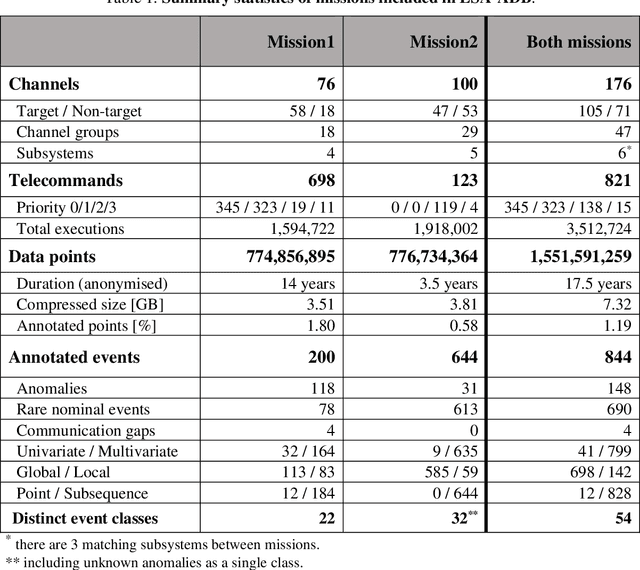Bogdan Ruszczak
The OPS-SAT benchmark for detecting anomalies in satellite telemetry
Jun 29, 2024Abstract:Detecting anomalous events in satellite telemetry is a critical task in space operations. This task, however, is extremely time-consuming, error-prone and human dependent, thus automated data-driven anomaly detection algorithms have been emerging at a steady pace. However, there are no publicly available datasets of real satellite telemetry accompanied with the ground-truth annotations that could be used to train and verify anomaly detection supervised models. In this article, we address this research gap and introduce the AI-ready benchmark dataset (OPSSAT-AD) containing the telemetry data acquired on board OPS-SAT -- a CubeSat mission which has been operated by the European Space Agency which has come to an end during the night of 22--23 May 2024 (CEST). The dataset is accompanied with the baseline results obtained using 30 supervised and unsupervised classic and deep machine learning algorithms for anomaly detection. They were trained and validated using the training-test dataset split introduced in this work, and we present a suggested set of quality metrics which should be always calculated to confront the new algorithms for anomaly detection while exploiting OPSSAT-AD. We believe that this work may become an important step toward building a fair, reproducible and objective validation procedure that can be used to quantify the capabilities of the emerging anomaly detection techniques in an unbiased and fully transparent way.
European Space Agency Benchmark for Anomaly Detection in Satellite Telemetry
Jun 25, 2024



Abstract:Machine learning has vast potential to improve anomaly detection in satellite telemetry which is a crucial task for spacecraft operations. This potential is currently hampered by a lack of comprehensible benchmarks for multivariate time series anomaly detection, especially for the challenging case of satellite telemetry. The European Space Agency Benchmark for Anomaly Detection in Satellite Telemetry (ESA-ADB) aims to address this challenge and establish a new standard in the domain. It is a result of close cooperation between spacecraft operations engineers from the European Space Agency (ESA) and machine learning experts. The newly introduced ESA Anomalies Dataset contains annotated real-life telemetry from three different ESA missions, out of which two are included in ESA-ADB. Results of typical anomaly detection algorithms assessed in our novel hierarchical evaluation pipeline show that new approaches are necessary to address operators' needs. All elements of ESA-ADB are publicly available to ensure its full reproducibility.
 Add to Chrome
Add to Chrome Add to Firefox
Add to Firefox Add to Edge
Add to Edge